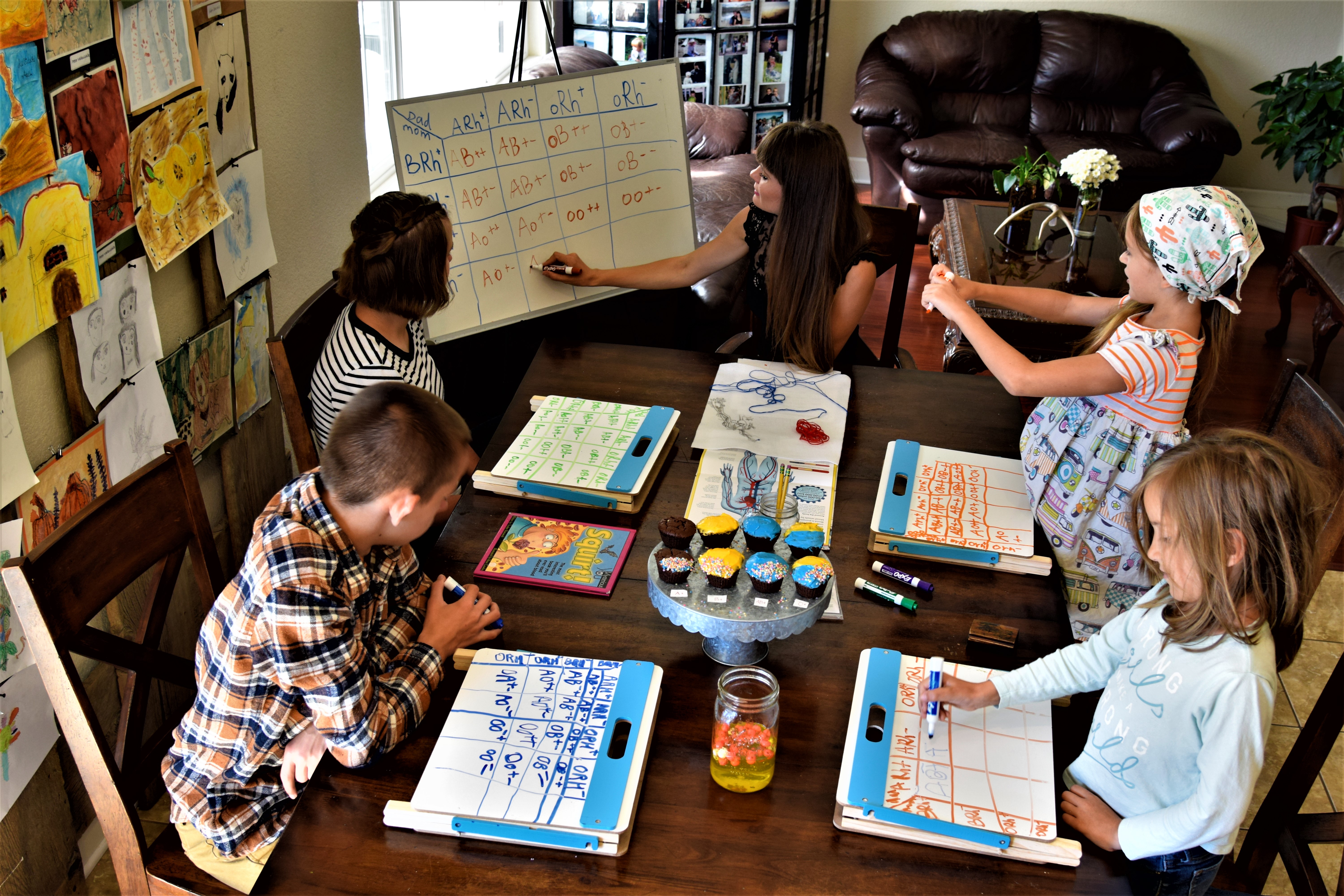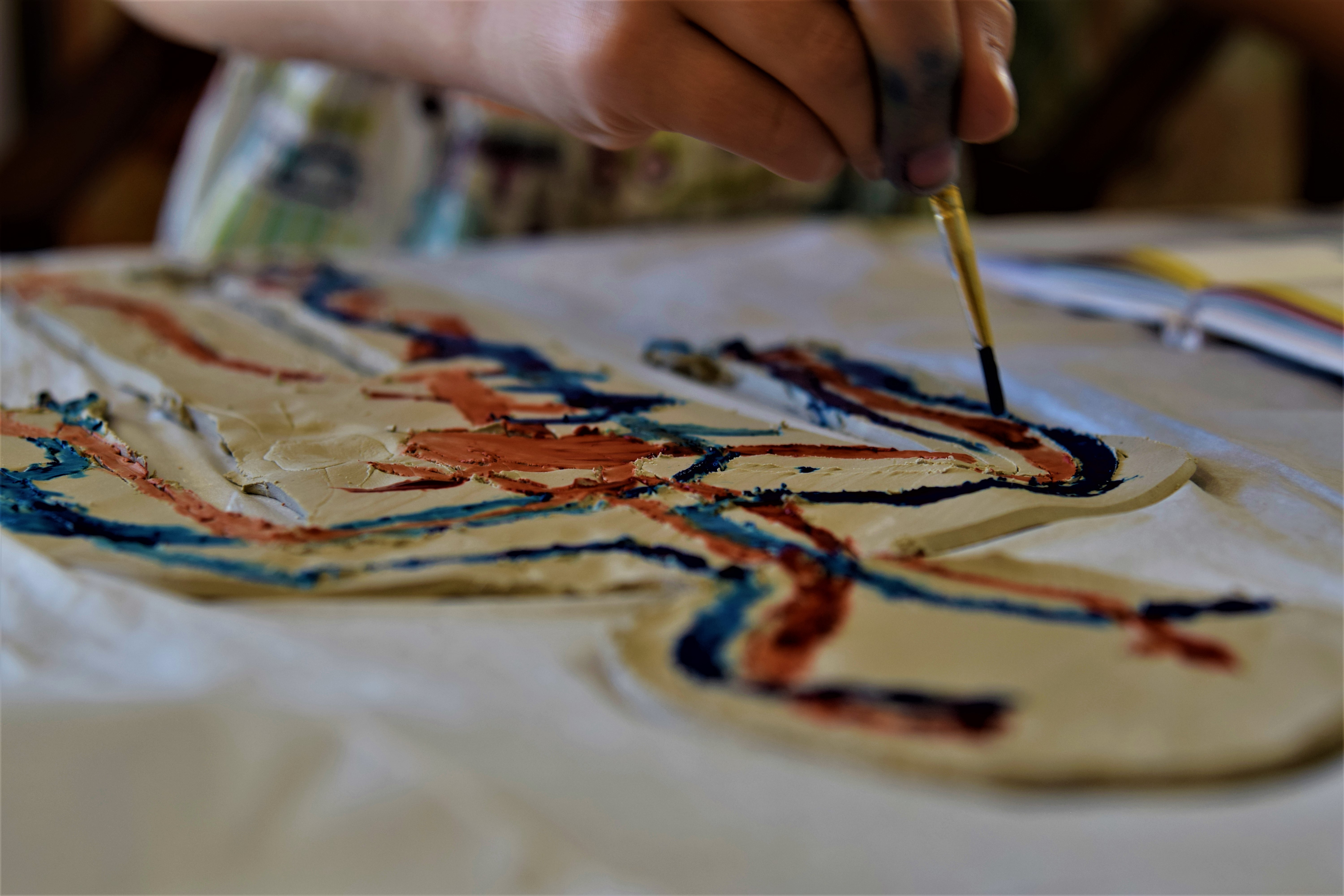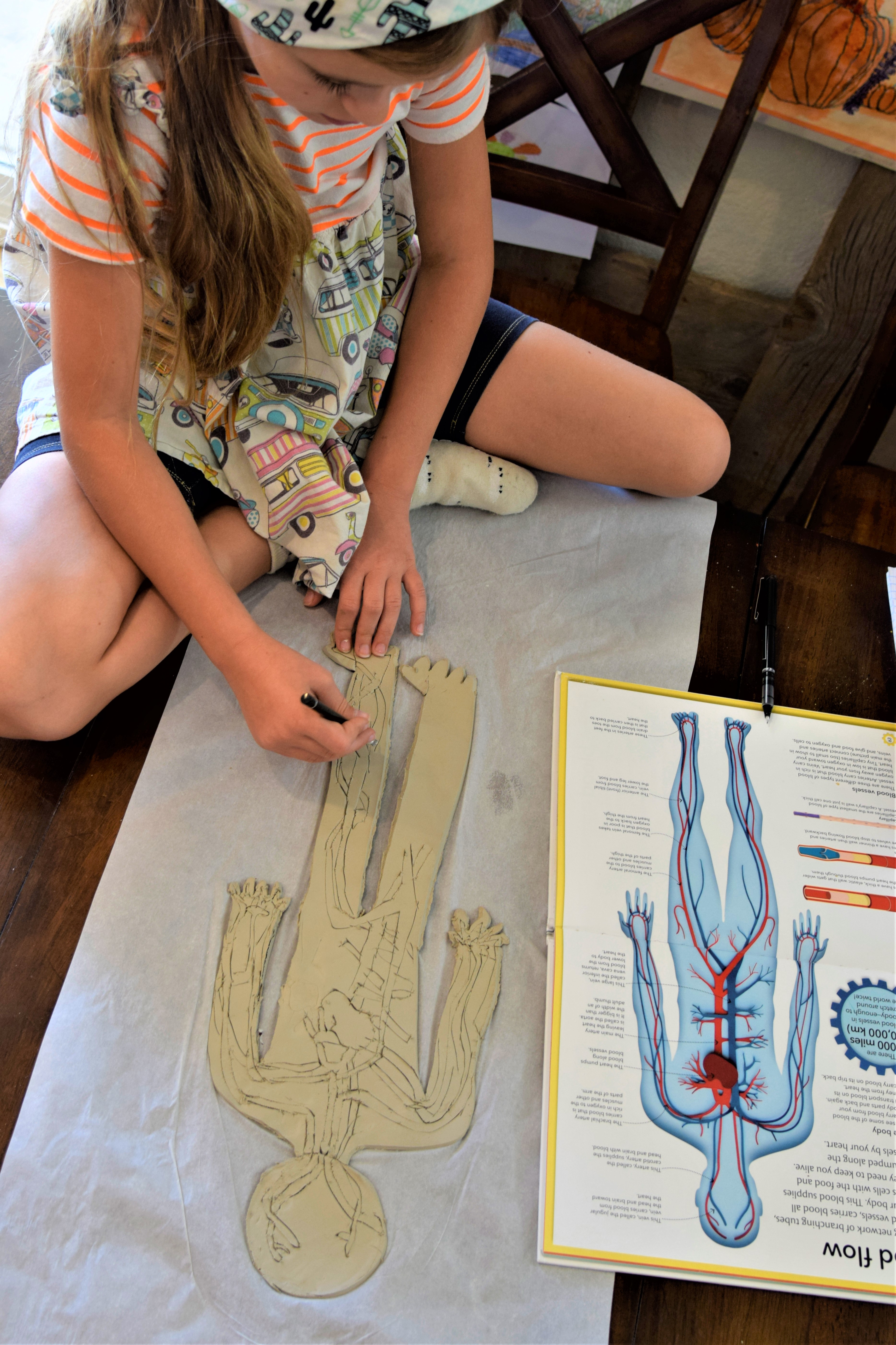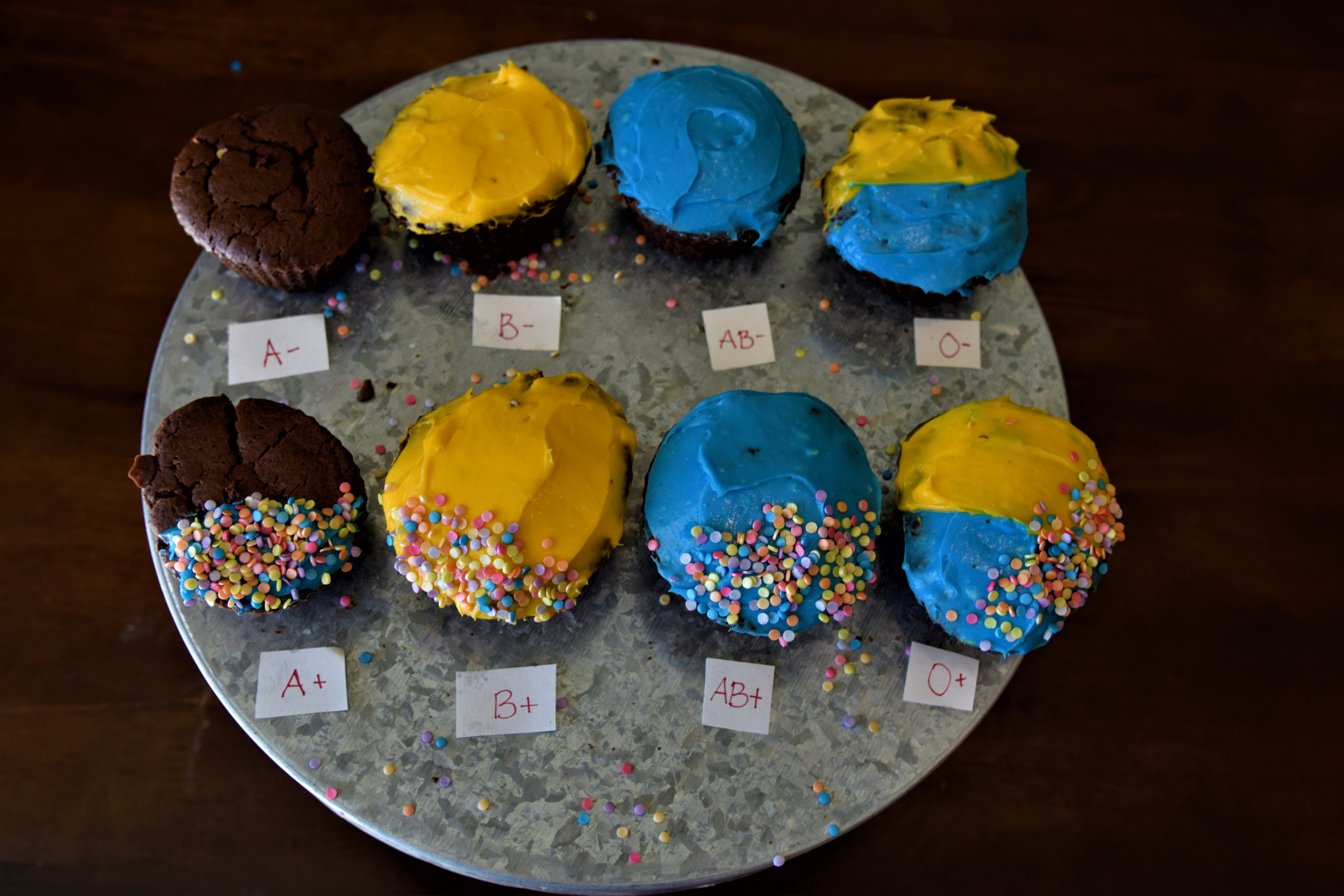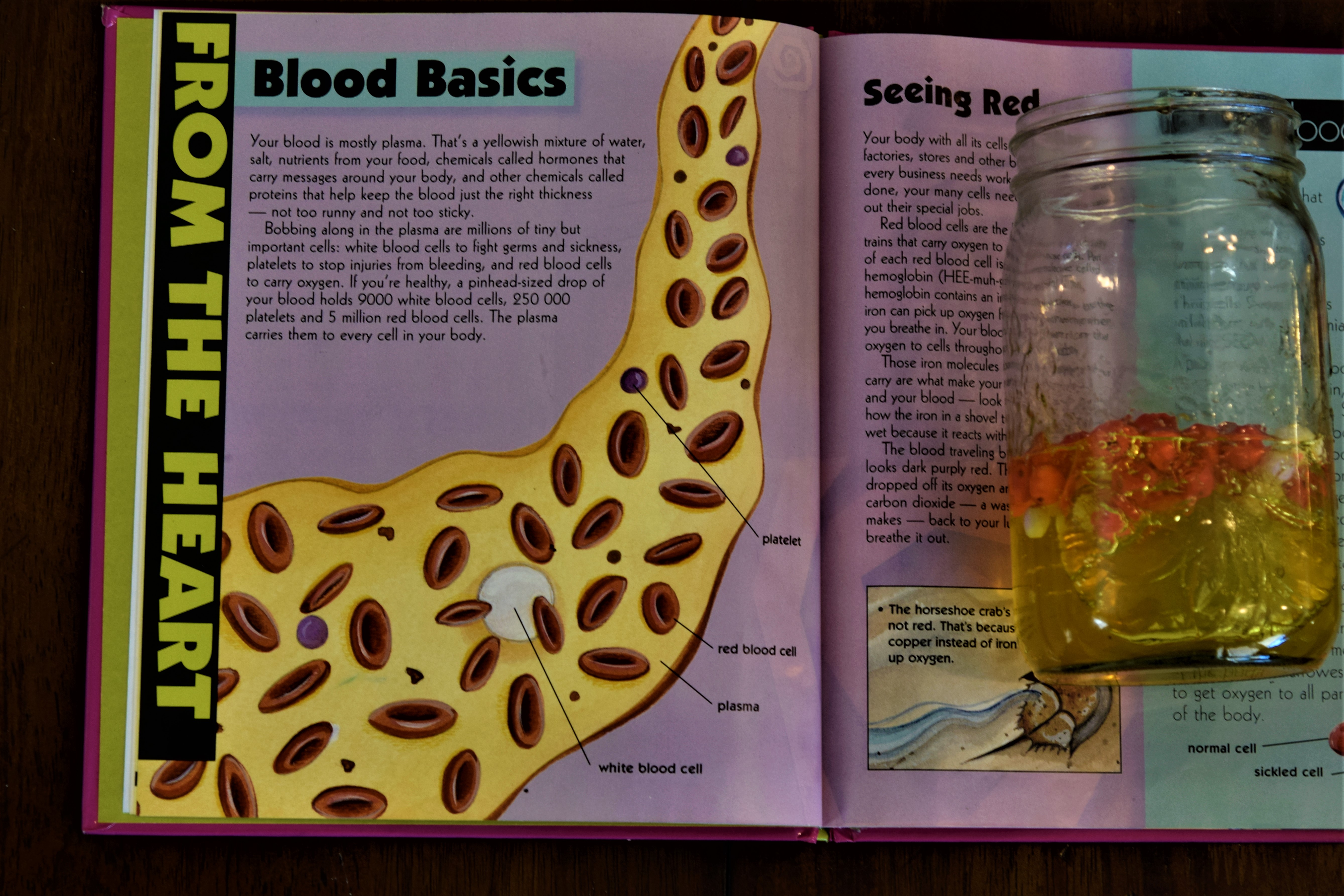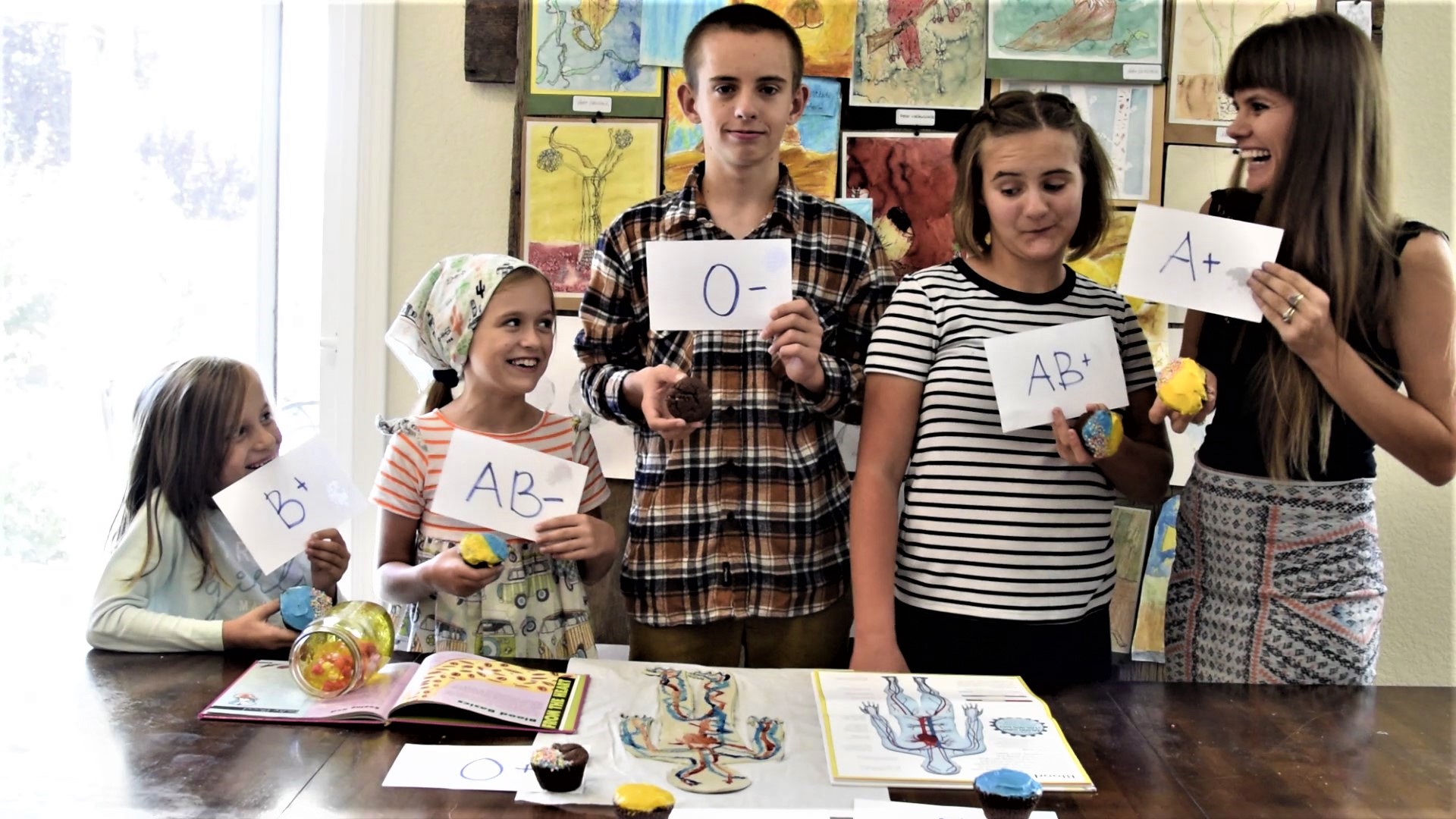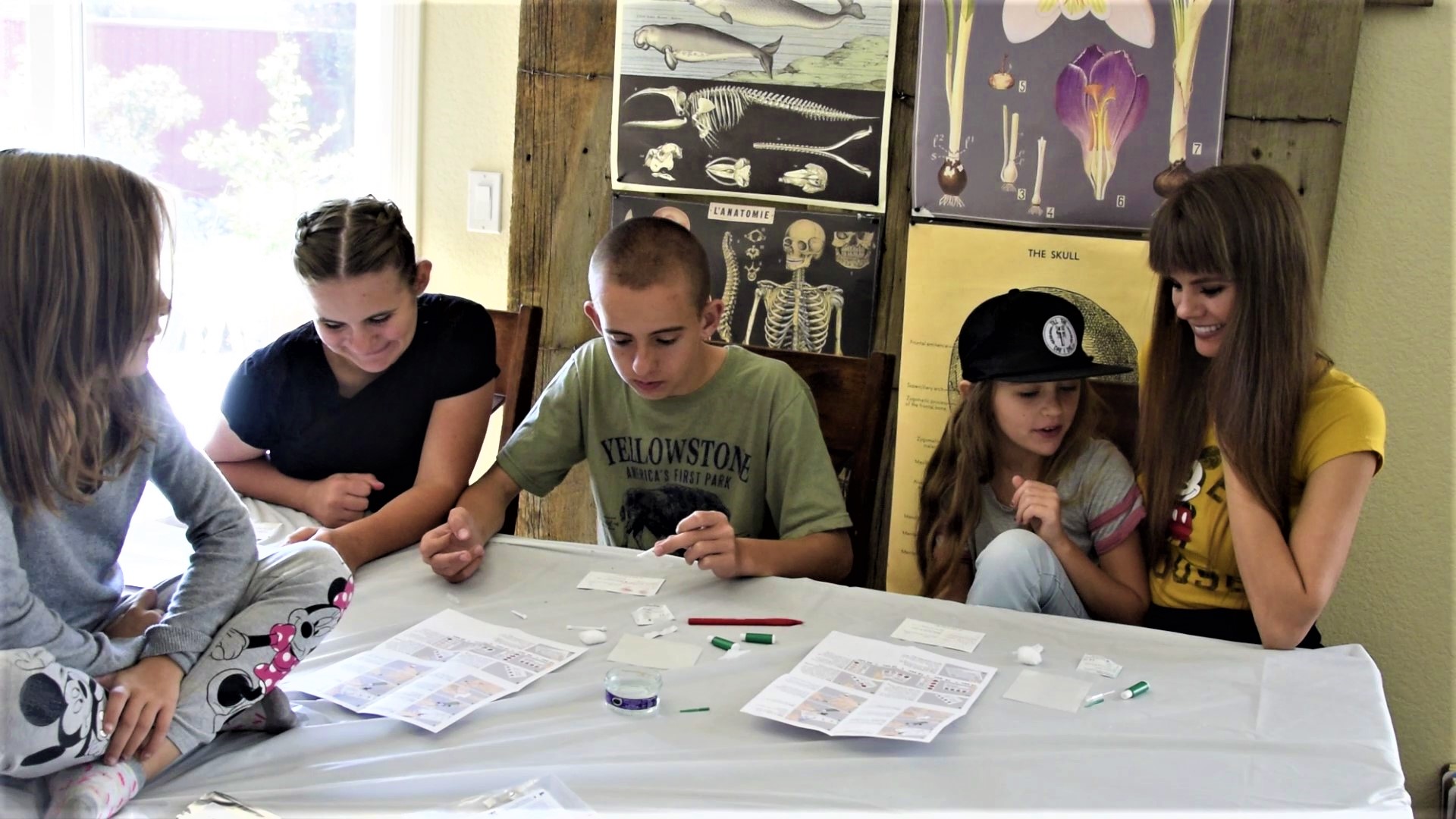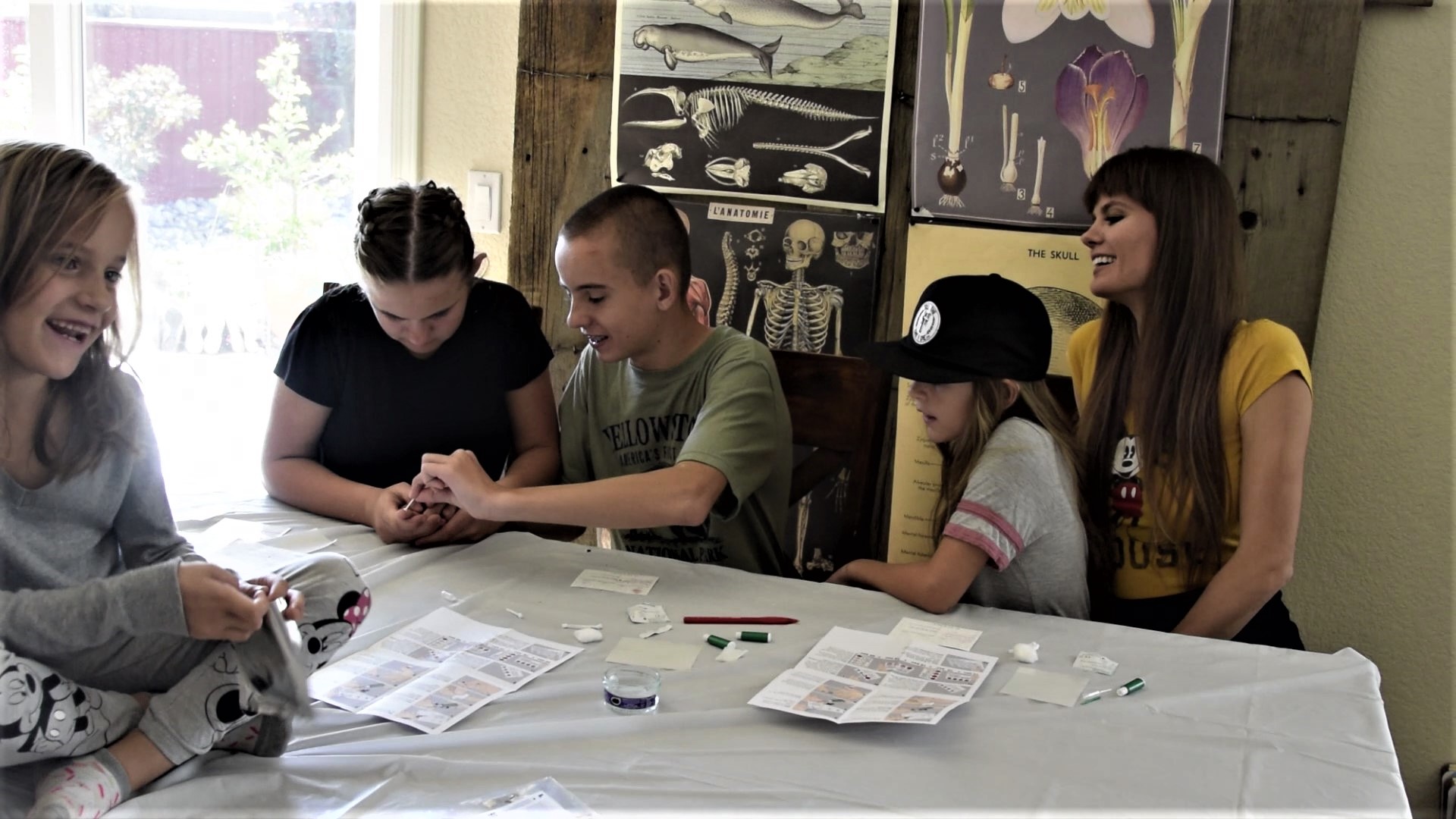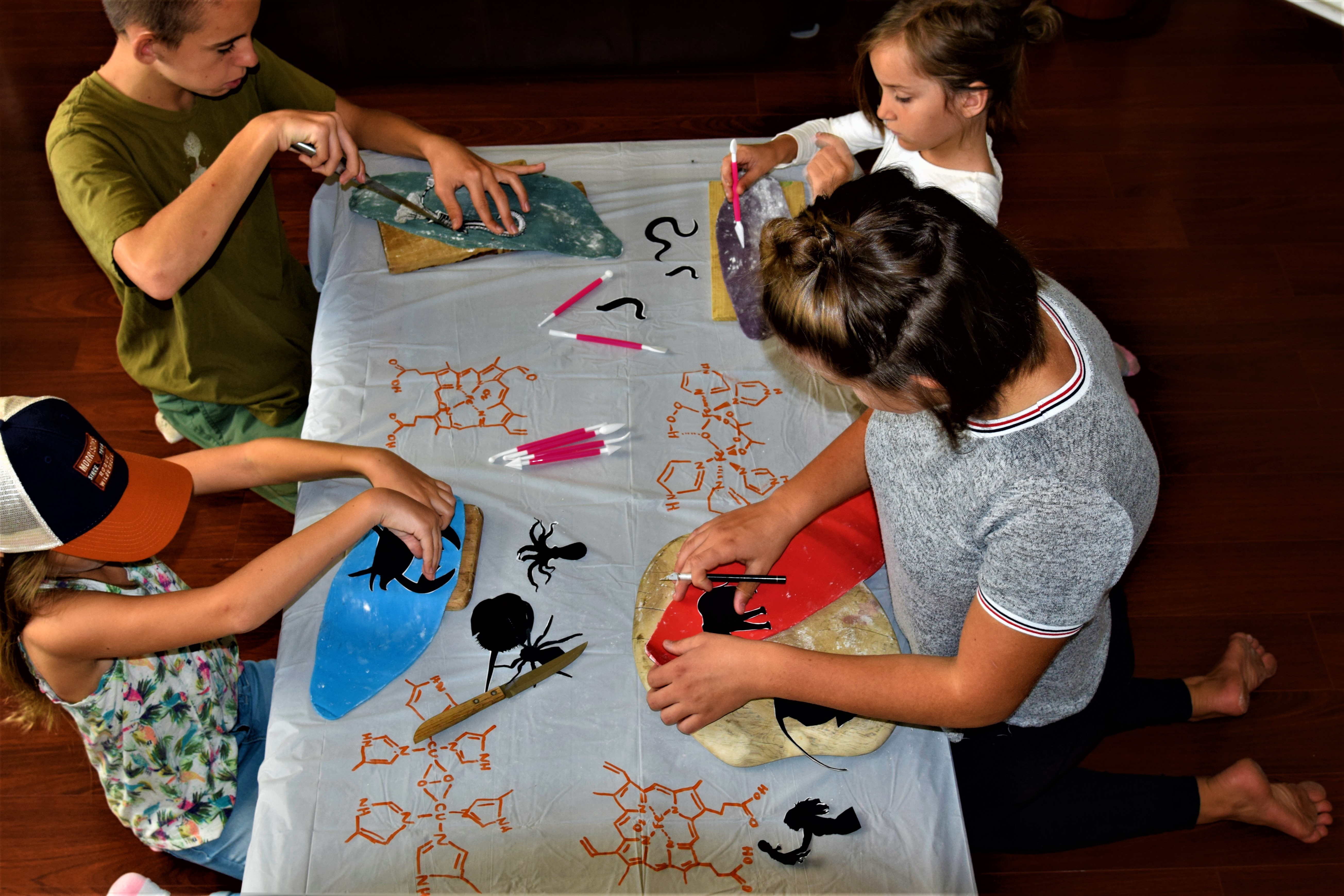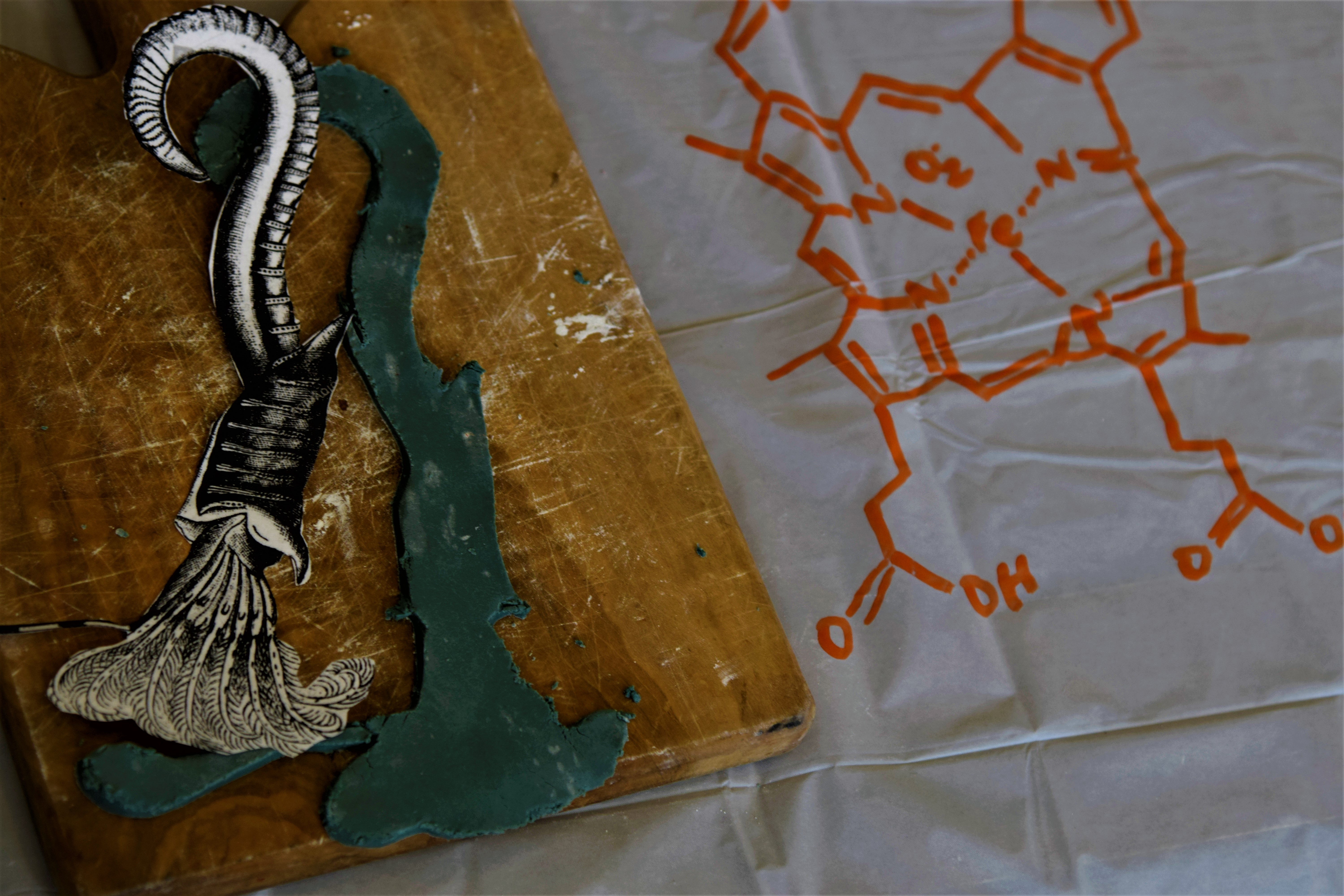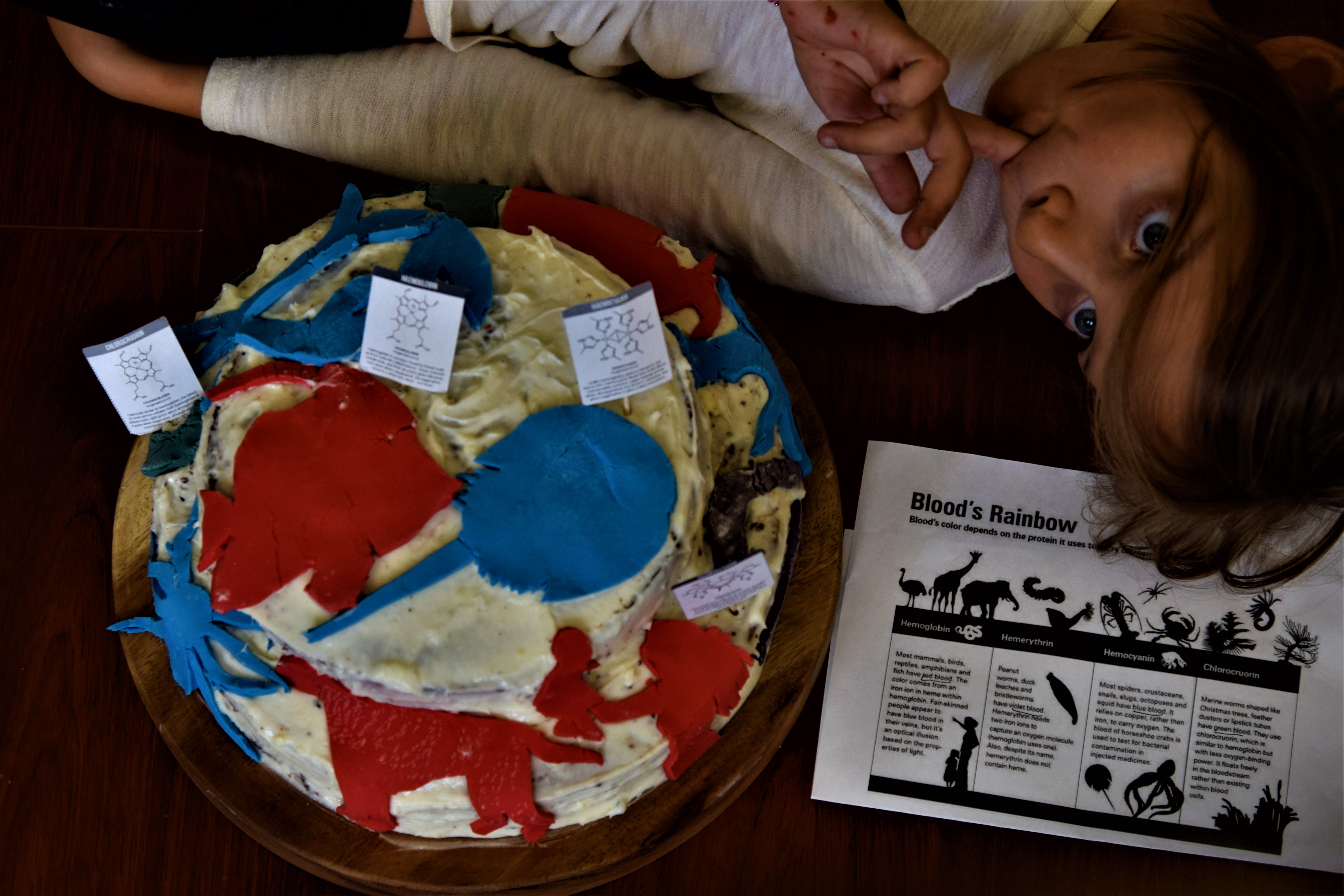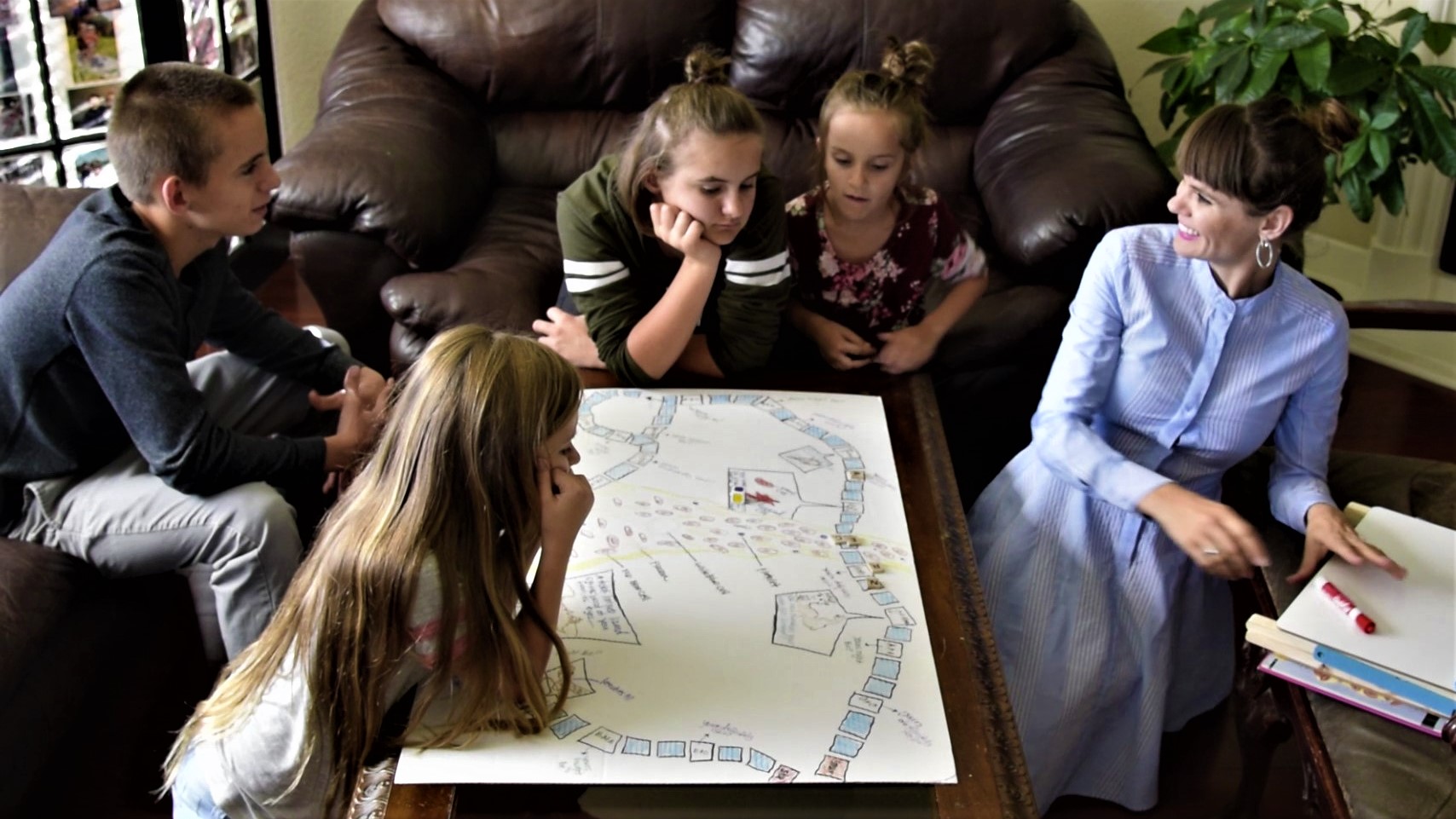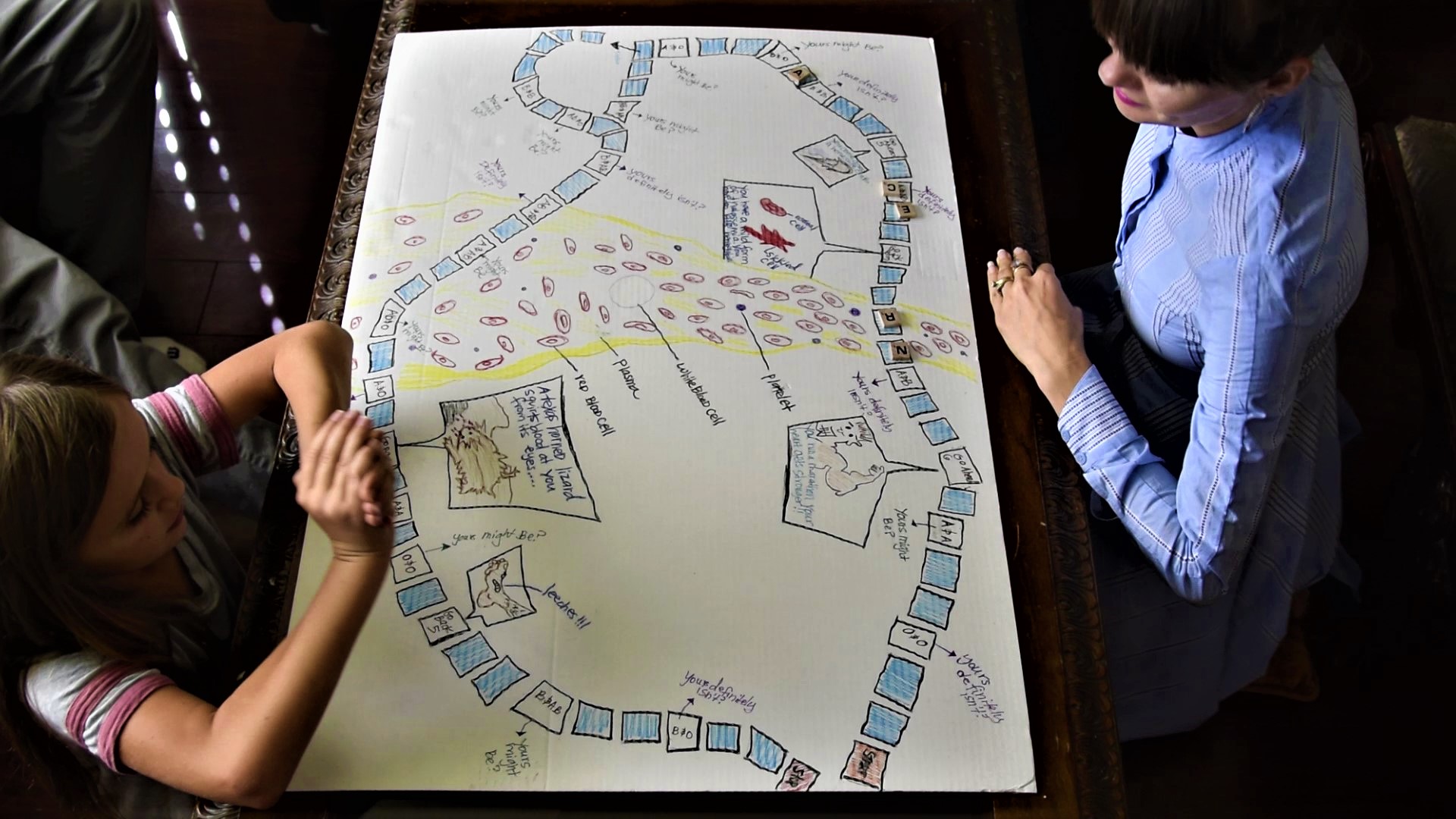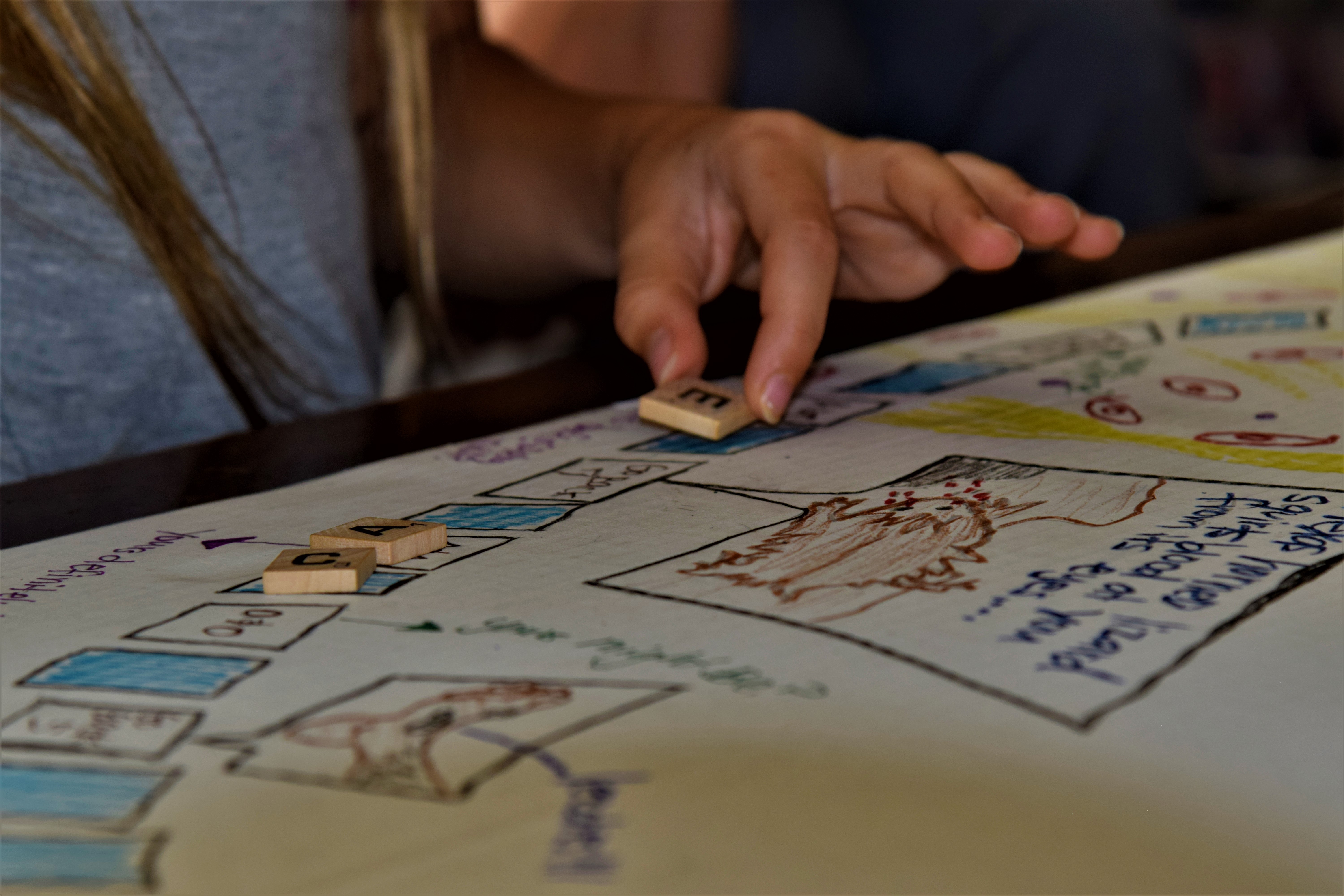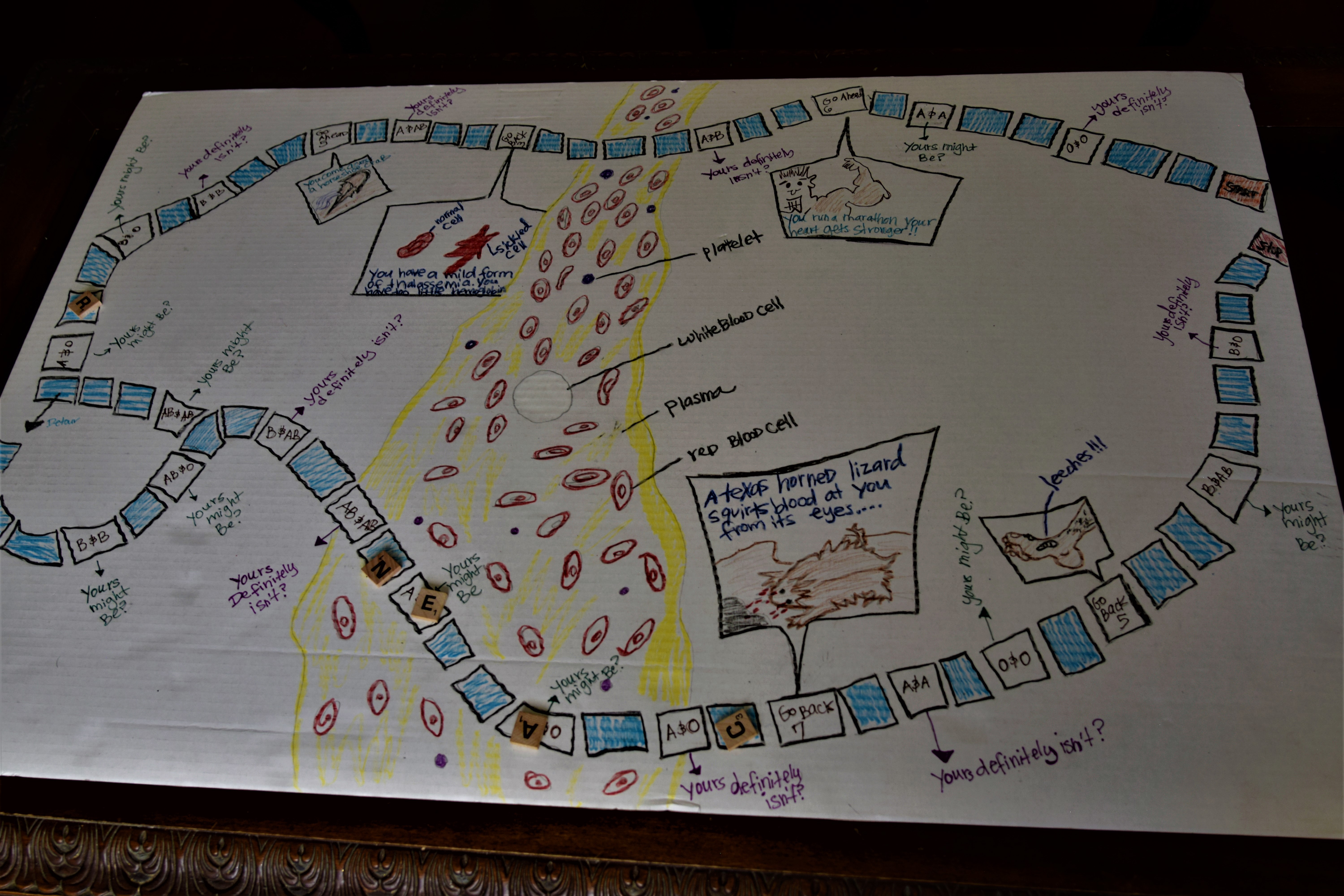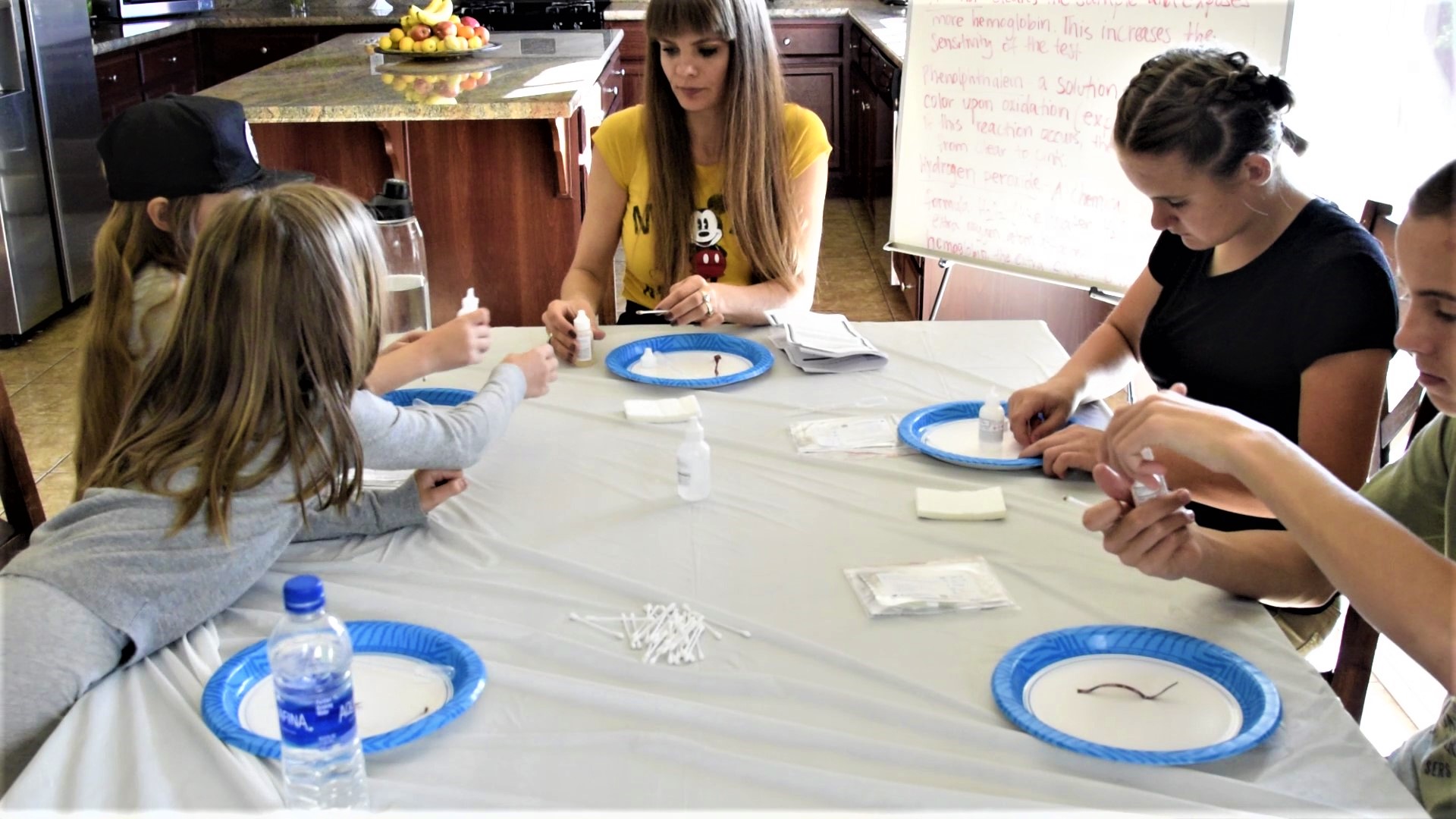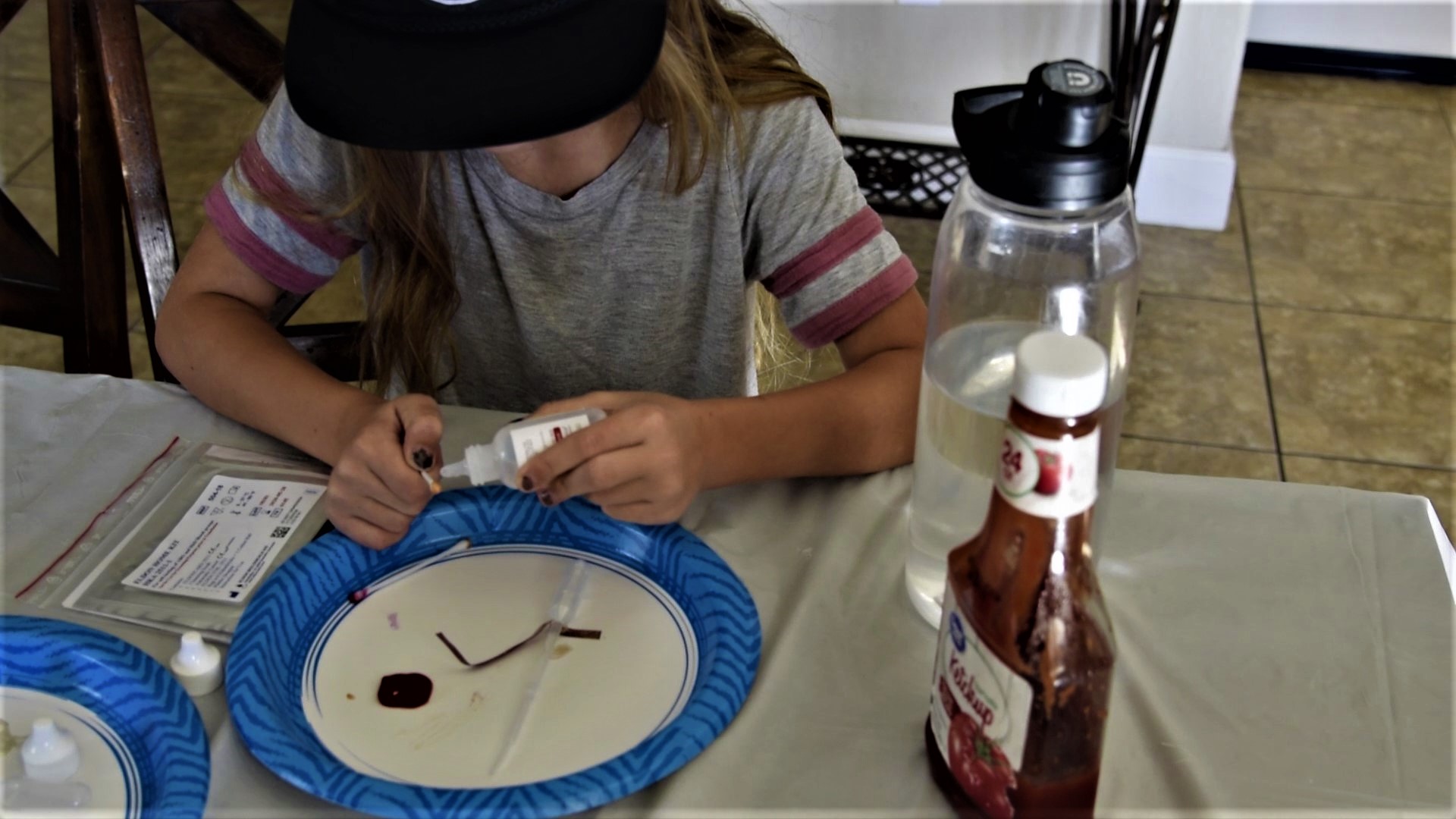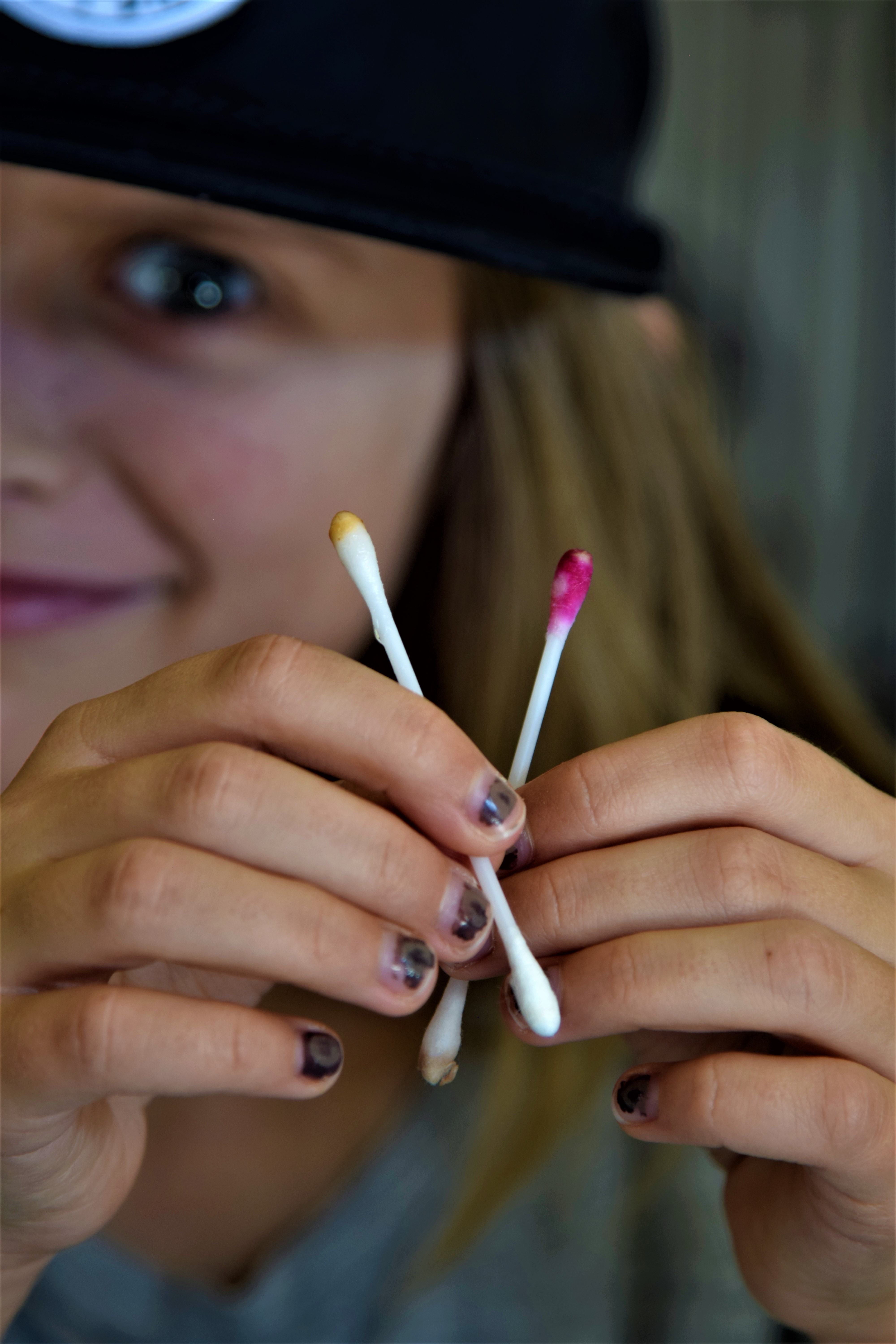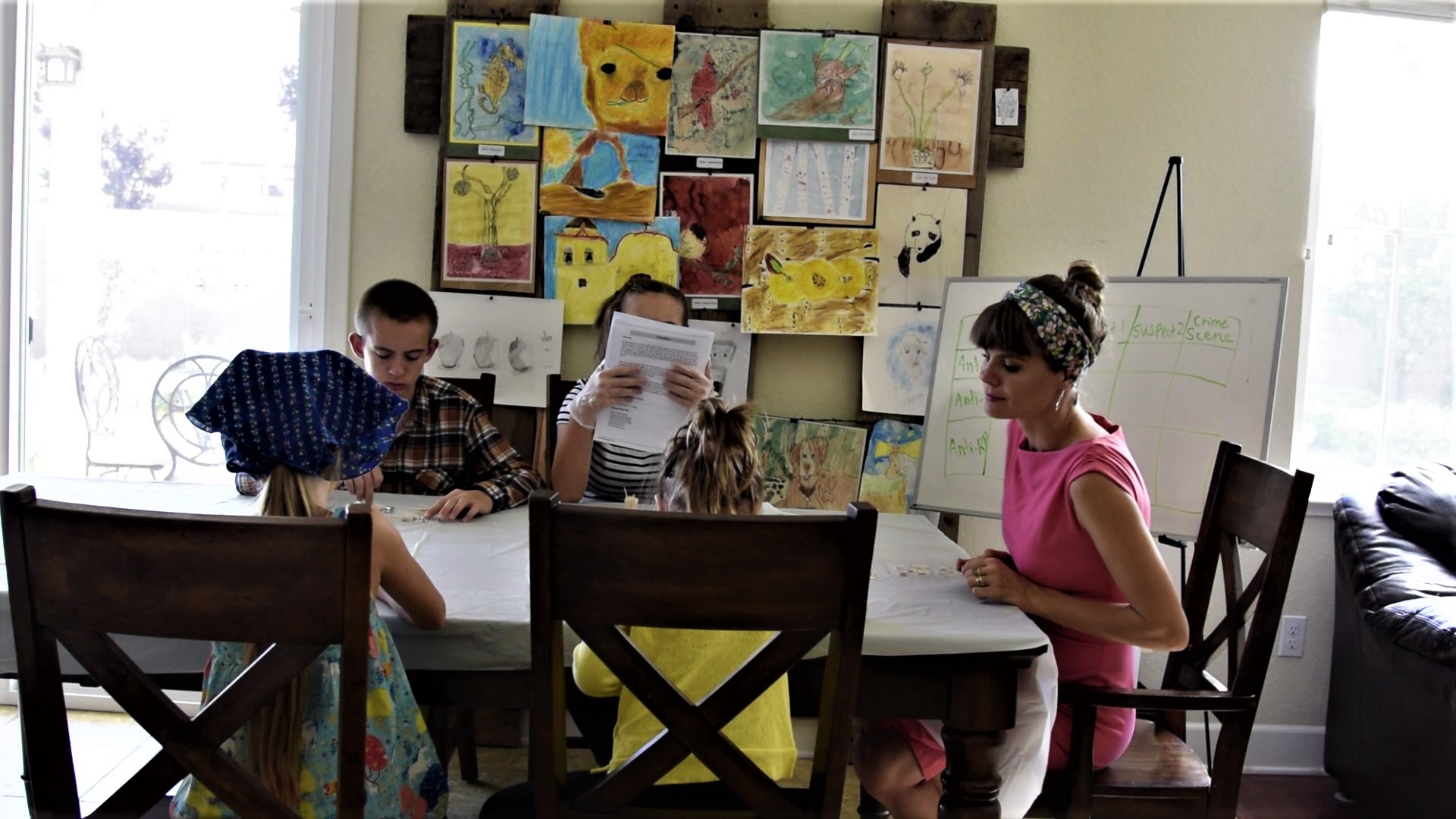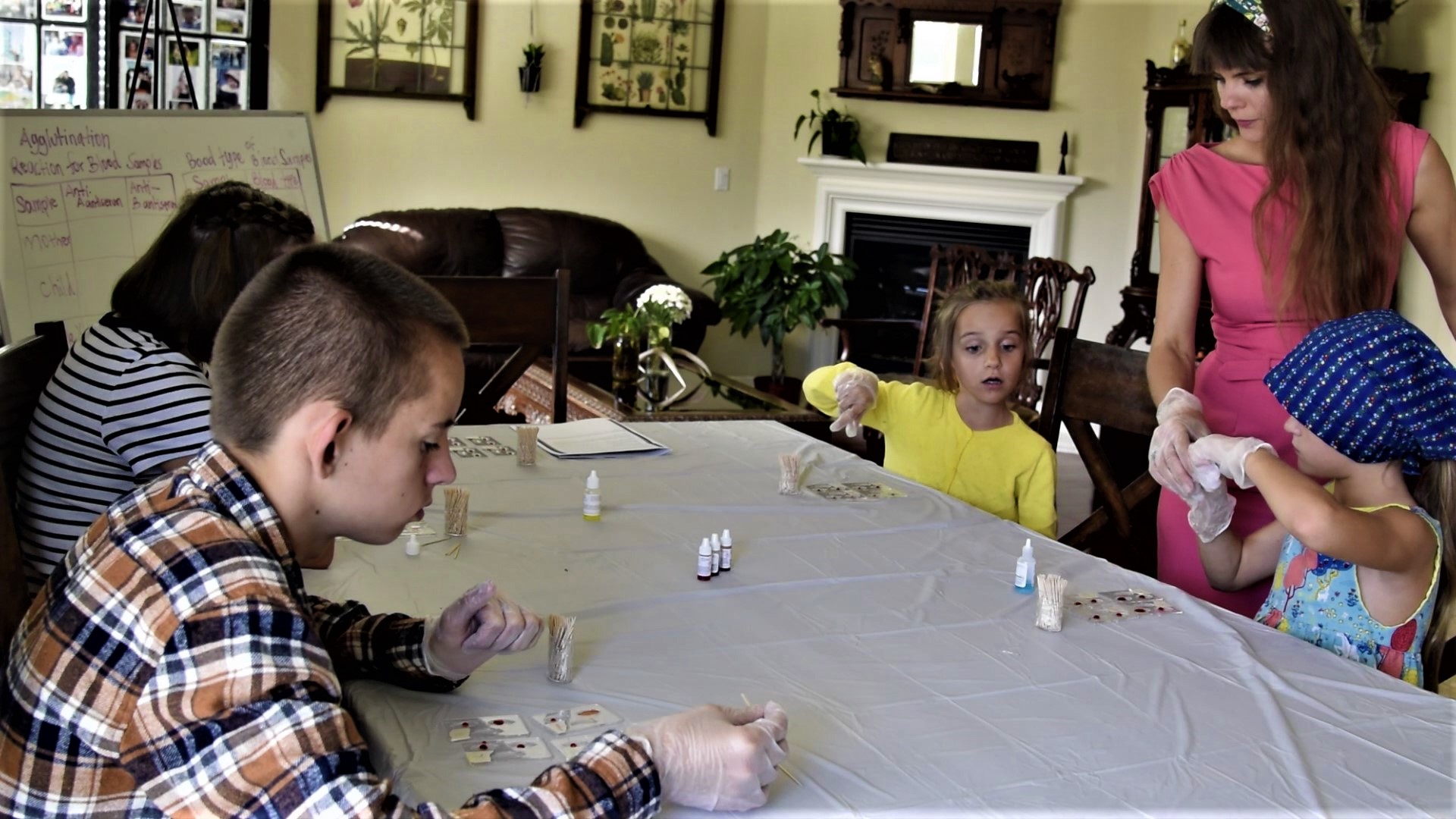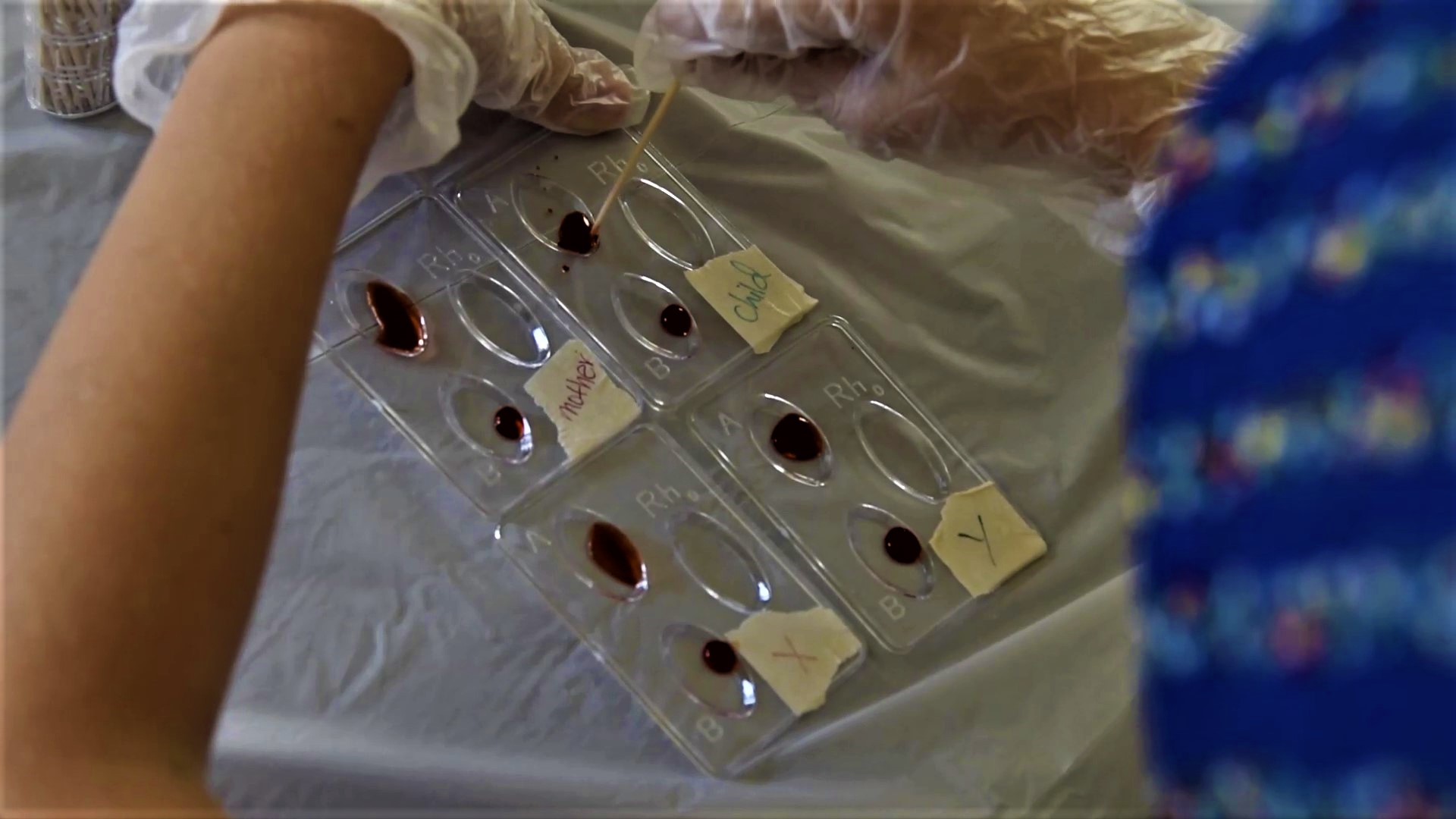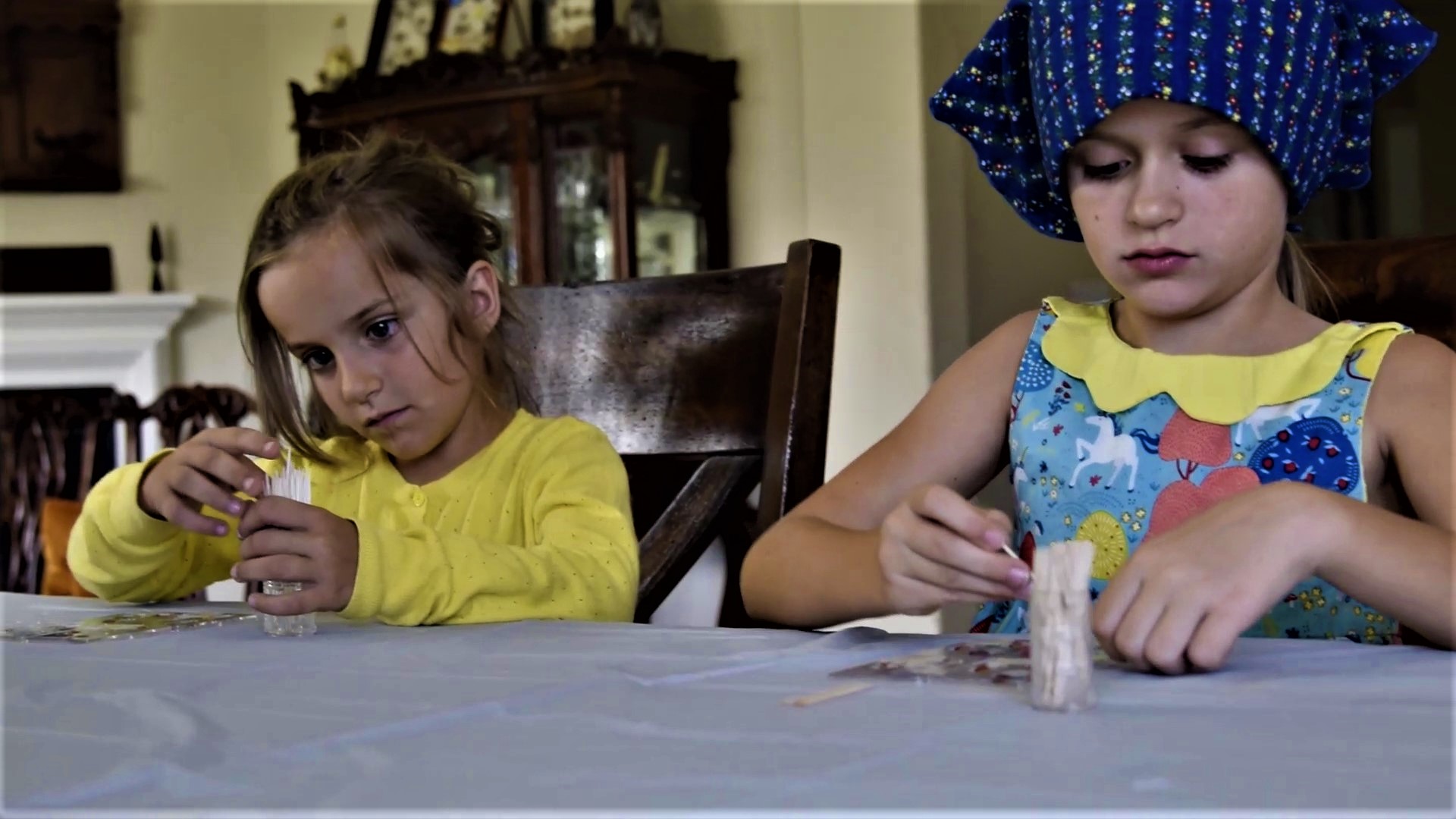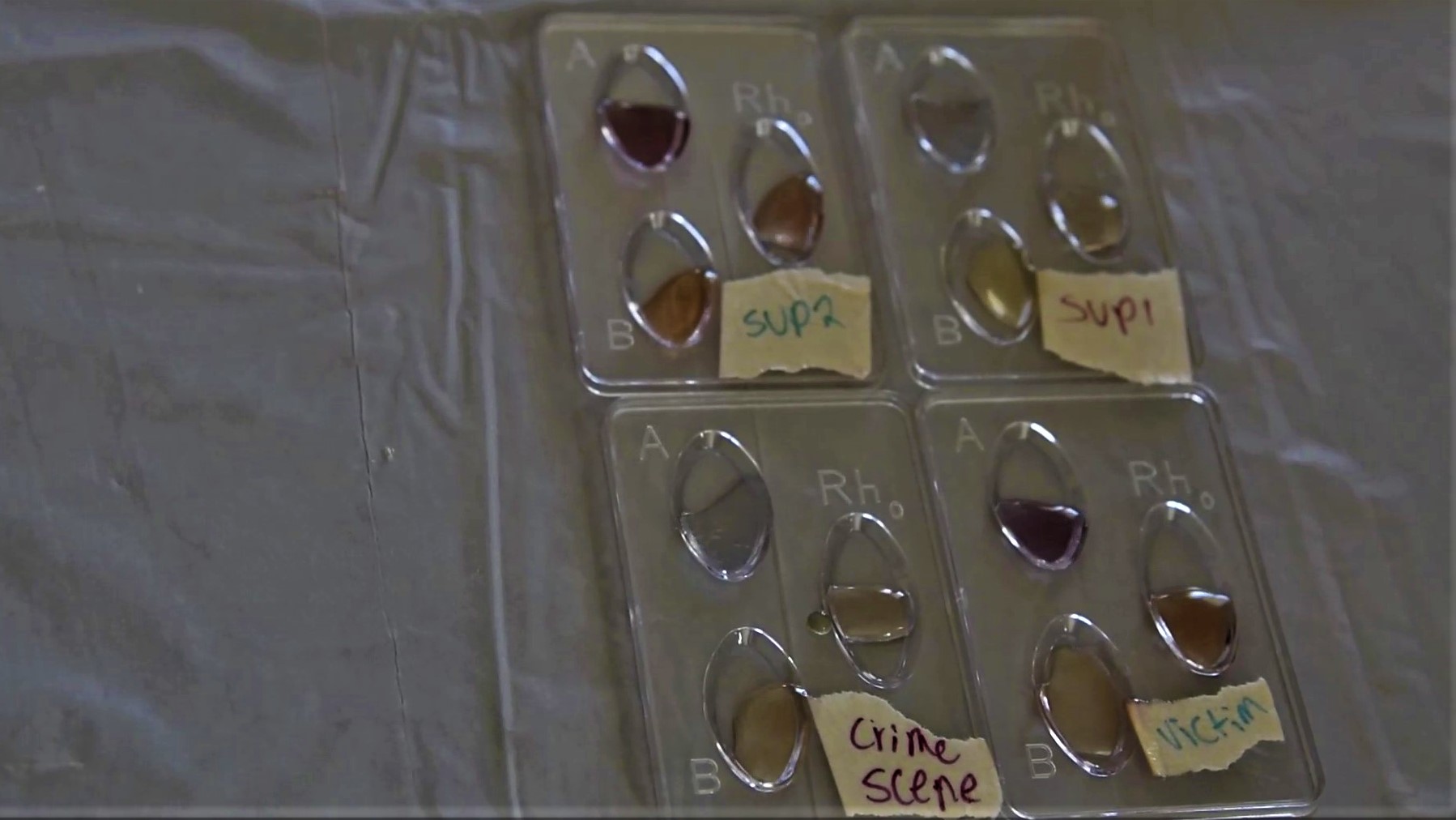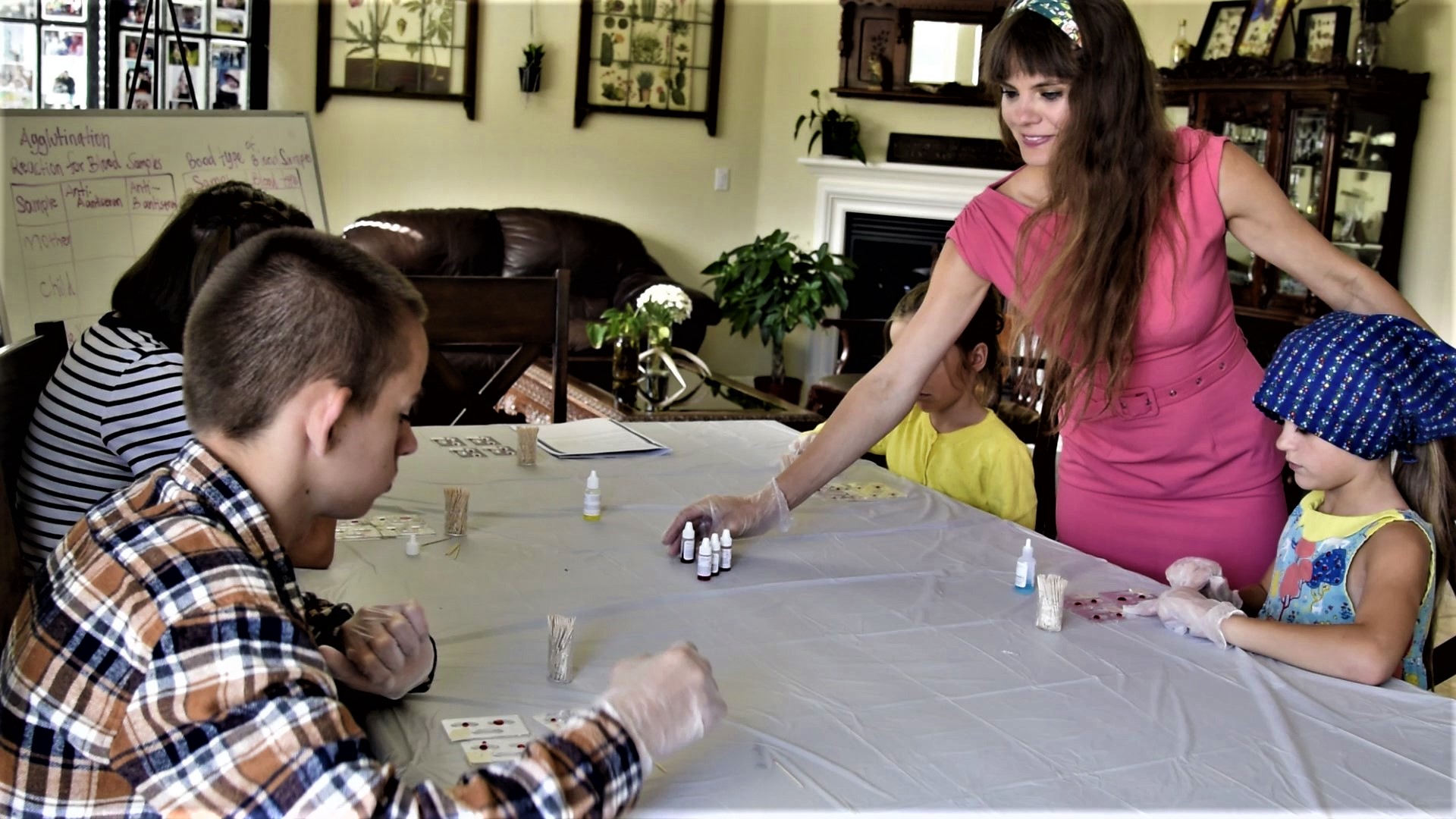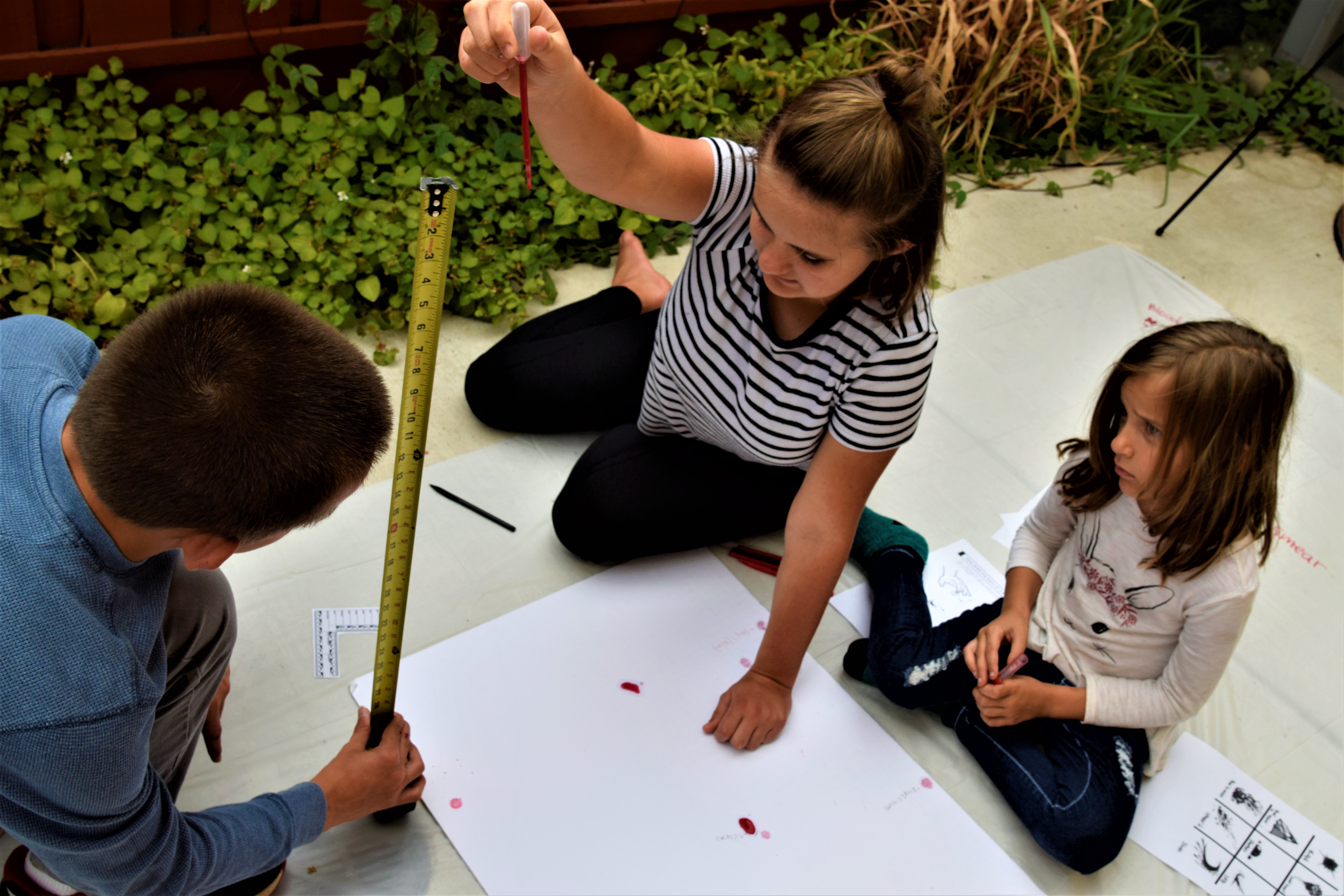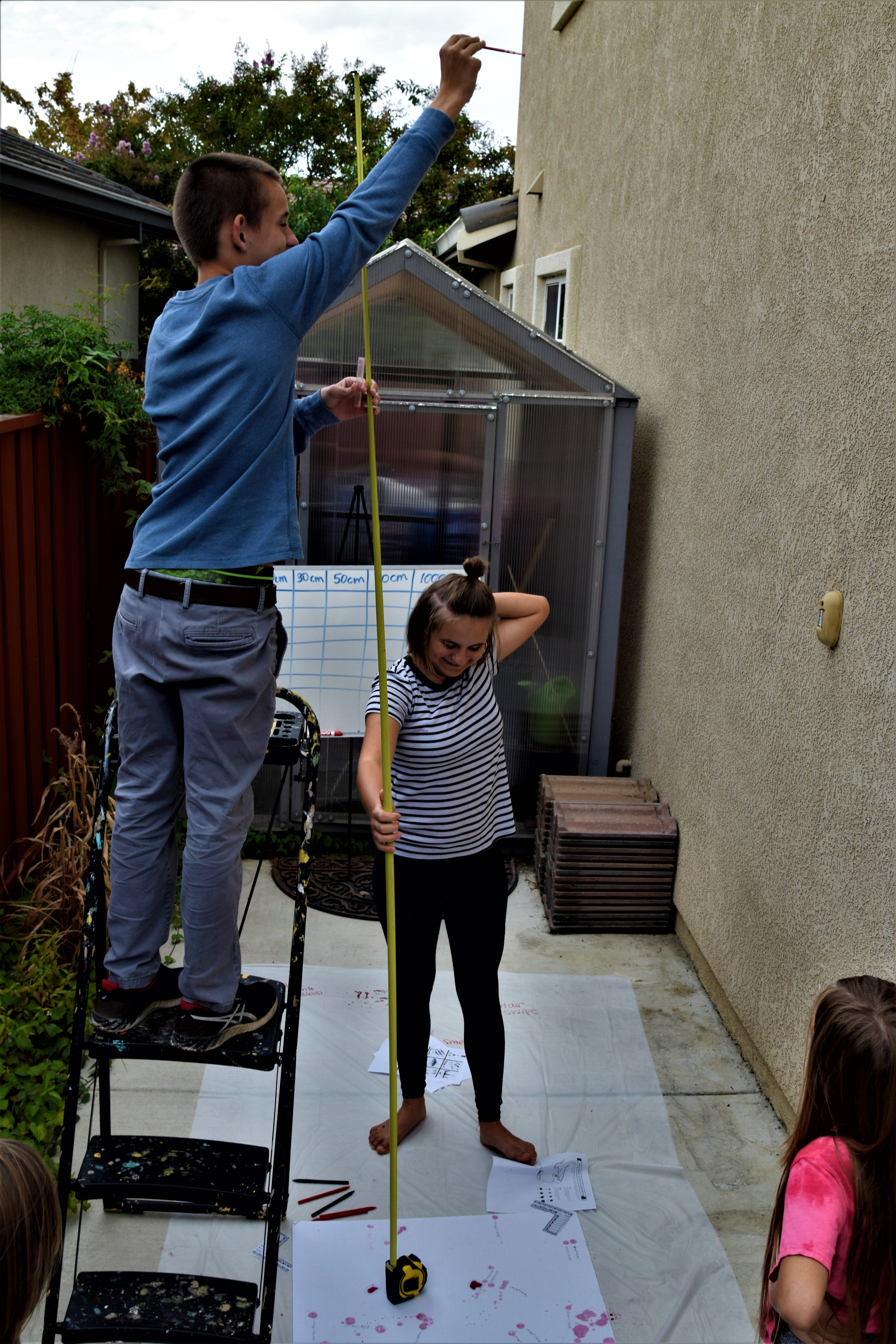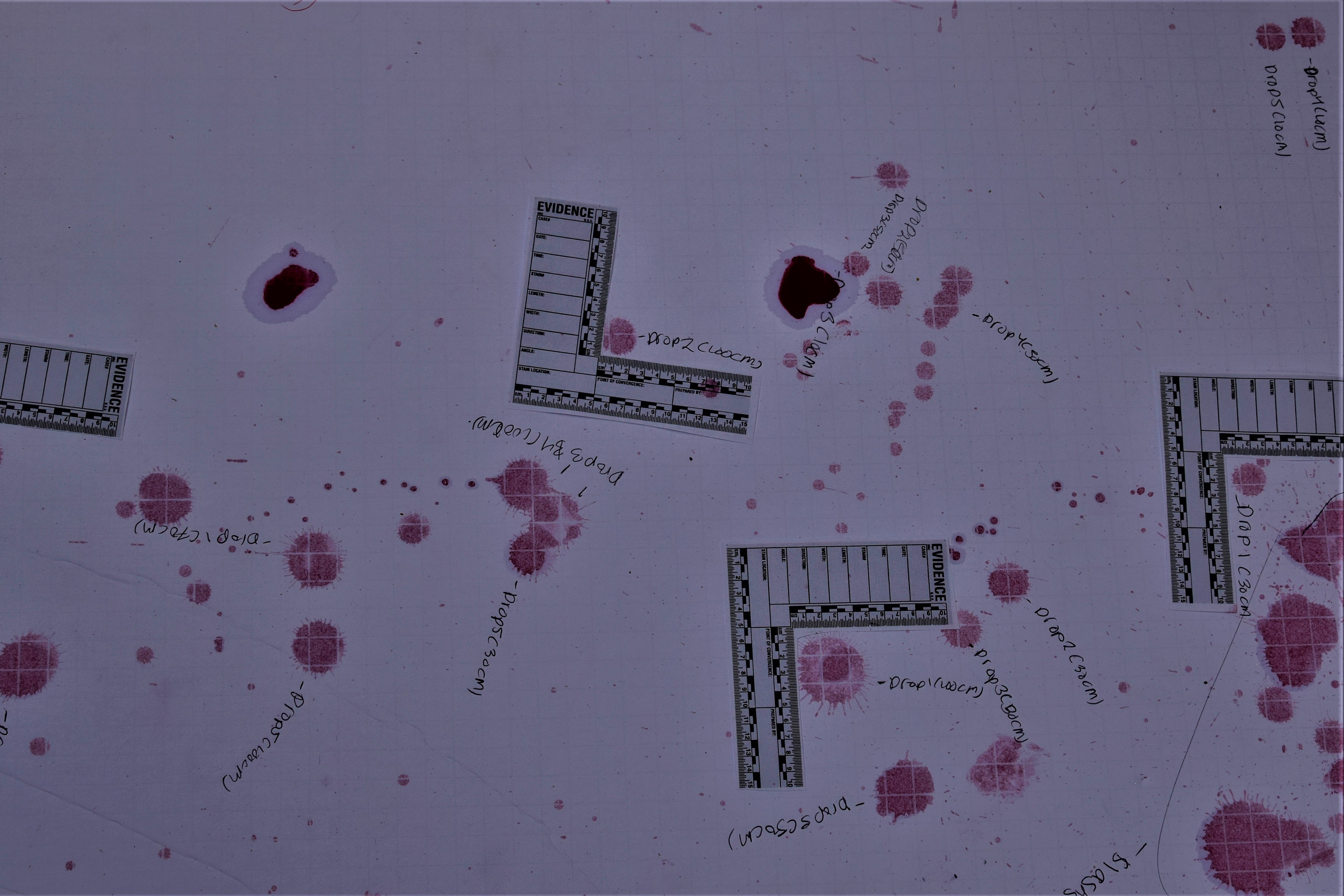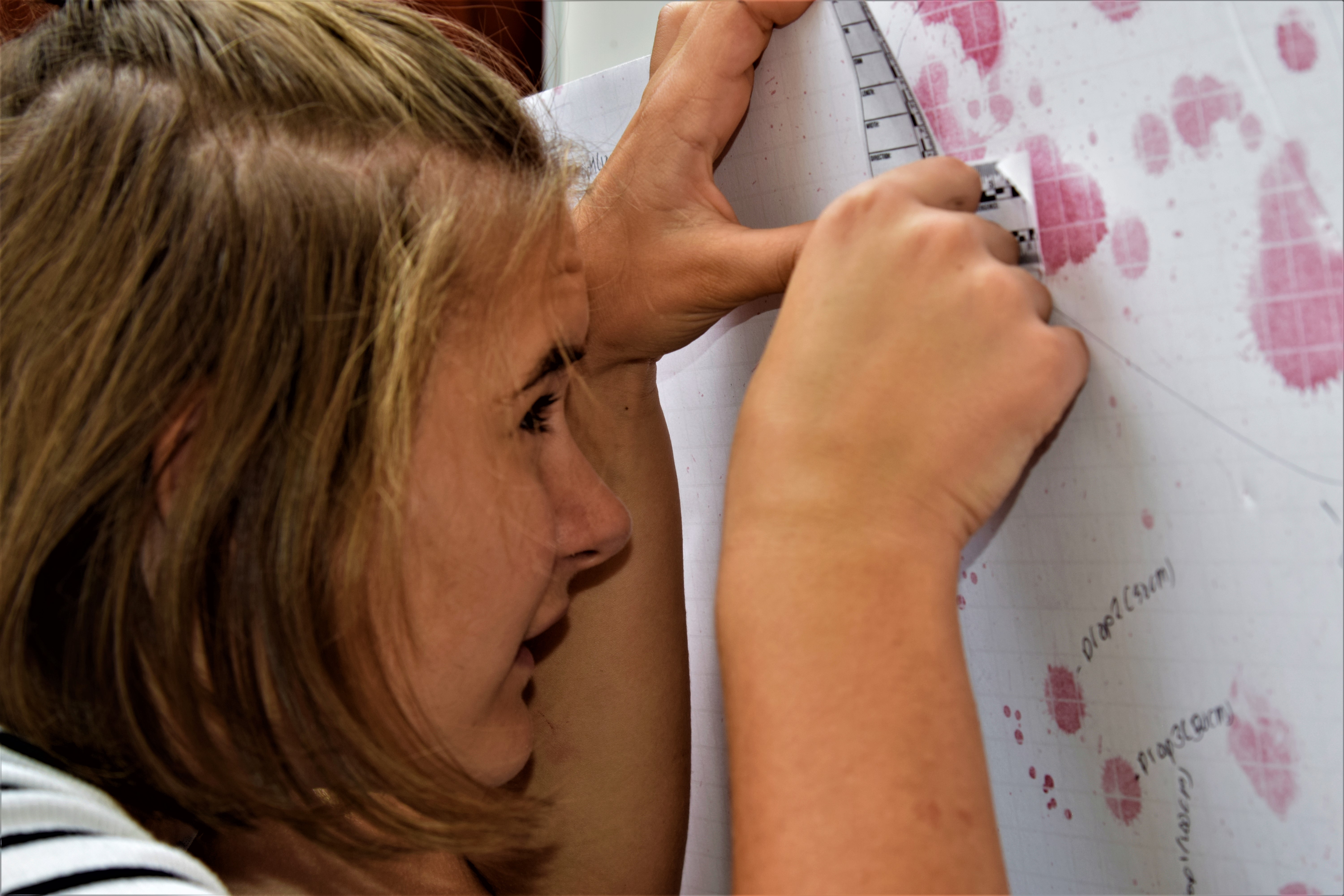I get a lot of questions about how I come up with our unit studies so I thought I’d explain here. To start I always order lots of books about the subject we will be learning about. I look through and read the books before I present it to my children. For our blood unit study I read that the horseshoe crab’s blood is blue so I googled if there are other blood colors and found out that there are. So since Esther loves to bake I thought it would be fun to make a cake. I also searched online and came across different hands on kits.
The Punnett Square is one of my favorites because it is so easy to understand. Even Eve got it. It is easy to predict a child’s possible genotype based on the blood types of the child’s parents. We made cupcakes representing the different blood types on each one of them. We also made a model of blood. We used yellow jello to represent the plasma. We bought three different sizes of beads. The large ones represent the White Blood Cells. The medium size beads represented the red blood cells, and the small beads represented the platelets. An average drop of blood holds 9000 white blood cells, 250,000 platelets, and 5 million red blood cells. With that information in mind we added lots of red blood cell beads, a few platelets beads, and one bead that represented the white blood cell.
Elizabeth also worked on a model using clay to represent the blood flow.
Eldoncard Blood Type Kit
Before we started our blood unit study, we ordered 1 Eldoncard Blood Type Testing Kit. I only ordered one because I wasn’t sure if my kids would want to prick their finger. So on day one of our unit study Esther said she would do it but somehow we did it wrong and broke the needle. Elizabeth and Peter were trying to get it to work. In the end all three of them wanted me to order one for each of them. The kit finally arrived. Peter pricked Esther, Elizabeth pricked Peter, and Elizabeth pricked herself. I was so proud of them and I really think that they were so eager to do the blood test because of all the things we learned about blood. Too often we are too afraid of the unknown.
Different Blood Colors
Did you know that blood’s color depends on the protein it uses to carry oxygen and not all living things have the same blood color? Humans and most vertebrates such as fish have red blood. Beetles and sea cucumbers have yellow blood because they have a protein chemical called vanadium. Marine Worms and leeches have a blood protein called chlorocruorin. Spiders, crustaceans, octopuses, and squids have blue blood because they have a large concentration of copper. Brachiopods and some marine worms have purple blood because of hemerythrin.
We made a cake with the animals representing their blood color.
What blood type can you have game?
This board game that I came up with is very simple to make. If you know what blood type each birth parents has, you can figure out what type you don’t have. If one of the parents has AB then the child can never have O. Knowing this really helps you figure out what your possibility really is.
If your parents’ blood types are: Yours might be: Yours definitely isn’t :
A and A A or O B or AB
A and B Any of A, B, AB, O –
A and AB A, B, or AB O
A and O A or O B or AB
B and B B or O A or AB
B and AB A, B, or AB O
B and O B or O A or AB
AB and AB A, B, or AB O
AB and O A or B AB or O
O and O O A, B, or AB
Presumptive Blood Test
Have you ever wondered if what you find on the floor is blood? Well a Kastle-Meyer blood test is the first test that is taken to determine if the red is really blood or maybe it is just ketchup or paint. The great thing about this test is that it will not destroy any part of the sample. If the sample is really blood then the results will be a positive bright pink this is because there is the presence of hemoglobin. The three reagents used in this test are alcohol, Phenolphthalein, and hydrogen peroxide. We ordered the kit from Home Science Tools.
Genetic of Blood Types and Forensic Chemistry of Blood Typing
We solved two mysteries, one was who is the father of the child and the second was who was the suspect at the crime scene. I don’t remember science class ever being this fun in school. My kids loved it so much.
We had 4 different samples of blood to work with : the victims blood, 1st suspect, 2nd suspect, and crime scene blood sample. We had to observe the well of each of the agglutination. We then noted the presence or absence of the agglutination.
We got our kits from Home Science Tools.
Blood Splatter
Detectives who solve crimes can determine how far and how fast blood fell. They can tell if the victim was shot, dragged, or moved.
We splattered paint from different heights and learned that the greater the distance that the drop fell from, the larger the splatter is.
This is so easy and fun to do.
Thank you for reading our blog post. We share a new post every Thursday at 8pm.

